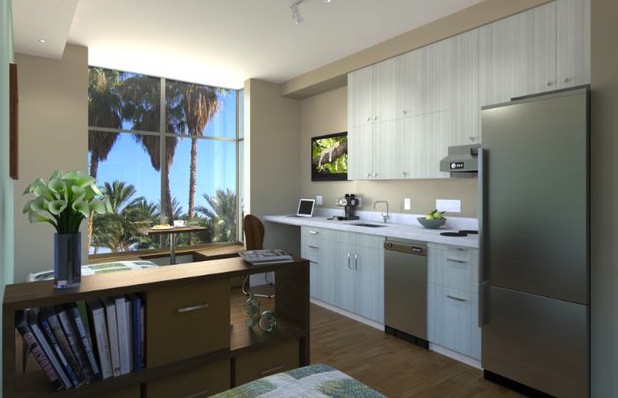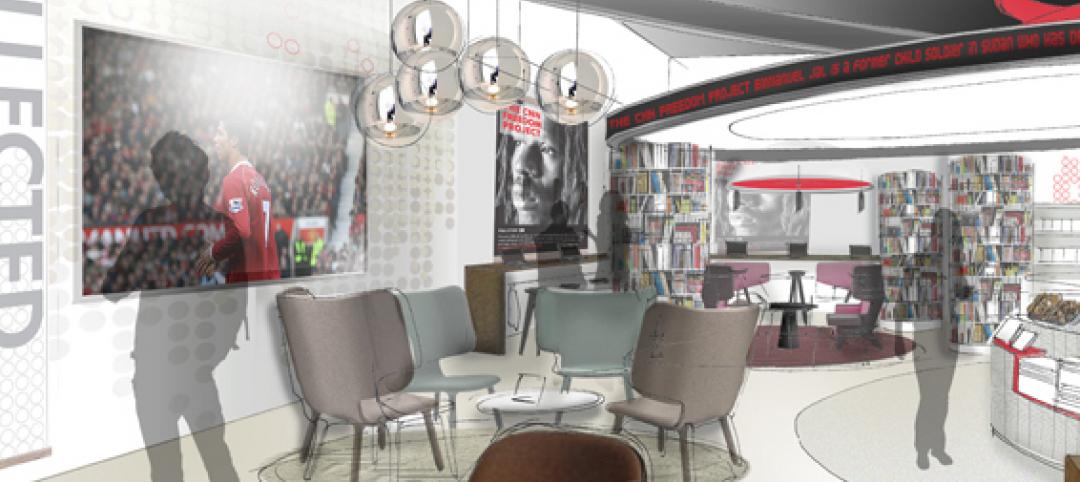New research from the Urban Land Institute suggests that micro units—typically larger than a one-car garage, smaller than a double—have staying power as a housing type that appeals to urban dwellers in high-cost markets who are willing to trade space for improved affordability and proximity to downtown neighborhoods.
The report, "The Macro View on Micro Units," includes an analysis by MPF Research of more than 400 rental apartment communities (comprising more than 90,000 units) built in 2012-2013 in the 35 U.S. metro areas that experienced the highest concentration of multifamily construction during that period. It also includes findings from more than 3,500 responses to an early 2014 survey by Kingsley Associates of renters of both conventional apartments and micro units; and case studies drawn from 30 existing and 18 planned rental communities with micro units that were identified by RCLCO (Robert Charles Lesser & Co.).
The report was prepared for ULI’s Multifamily Housing Councils with support from a grant awarded in 2013 by the ULI Foundation.
Key findings from the report:
• Micro units are typically about 350 square feet in size, but can range from less than 250 square feet to 500 square feet, depending on the city building code requirements. They have no separate bedroom; sleeping space is combined with living space, but they do have fully functional bathrooms and kitchens. Micro unit communities place heavy emphasis on multiple amenities outside the units themselves, such as shared communal spaces that encourage socializing and foster a sense of community.
• The target market profile for micro units is predominantly young professional singles, typically under 30 years of age, earning less than $40,000, trending slightly more toward males than females. Other market segments include couples, older single empty-nesters, and temporary users. Singles currently living with roommates tend to be the most interested in making the switch from a traditional unit to a micro unit.
• The appeal of micro units is largely about economics, as well as place and privacy. Those interested in micro units are seeking to lower their rental costs (the units typically rent for 20 to 30 percent less than larger units); they are also drawn to the trendy “hip” locations where micro units tend to be built, and by the ability to live alone.
• Nearly a quarter of the renters surveyed who live in conventional apartments said they would be interested in renting a micro unit. Fifty-eight percent said they would not be interested, primarily due to the lack of a separate bedroom, less storage space and less living or dining space.
• Those who are interested in switching to micro units ranked access to a grocery store as their top priority for a neighborhood amenity, followed by restaurants and a gym. In terms of project amenities, a laundry room ranked highest, followed by assigned parking, visitor parking, and a fitness center; and for unit amenities, a washer and dryer ranked first, followed by built-in closet/drawers and storage space. More than half were interested in multi-functional, convertible furniture.
• Those currently living in micro units cited location as the top factor influencing their decision to move into the small units, followed by price, proximity to work/education institutions, proximity to neighborhood amenities, the ability to live alone, and proximity to transit.
• Smaller and micro units outperform conventional units in the marketplace, in terms of achieving higher occupancy rates and garnering significant rental rate premiums (rent per square foot) compared with conventional units.
• The market is shifting toward a greater mix of smaller studio and one-bedroom units being included in traditional apartment communities, as well as more construction of micro-unit communities. Studio and one-bedroom units accounted for nearly 51 percent of the 2012-2013 completions, up drastically from 41 percent in 2002-2003.
• Despite the rising popularity of micro units, some developers are building in the flexibility to easily convert two side-by-side units into one larger unit if demand shifts back to more conventional models.
RCLCO’s case study research identifies four trends (primarily associated with Generation Y) that are linked to the rising appeal of the units: delayed household formation, an increase in single-person households, a decrease in car ownership, and the tendency to accumulate fewer belongings and participate in the “sharing economy.”
Among the case studies that contributed to the best practices and lessons learned: Factory 63 in Boston; The Flats in Chicago; Lofts at 7 in San Francisco; Arcade Providence in Providence, Rhode Island; Eko Haus Freedom Center in Portland, Oregon; and My Micro NY in Kips Bay, New York.
“Whether this (increased development of micro units) turns out to be a lasting phenomenon or a passing fad, micro units have renewed the focus on efficient layouts and innovative design solutions,” concludes the report.
Download a free PDF version of The Macro View on Micro Units report.
Related Stories
Greenbuild Report | Nov 30, 2015
10 megatrends shaping the future of green building
Increased competition among green building rating systems, the rise of net-zero buildings, and a sharper focus on existing structures are among the trends that will drive sustainability through 2020, according to author and green building expert Jerry Yudelson.
Contractors | Nov 24, 2015
FMI survey: Millennials in construction get a bad rap, tend to be loyal, hard-working
While the stigma exists that Millennials are entitled, disloyal, and lazy, it appears that this is not true, according to a new report from FMI.
Cultural Facilities | Nov 23, 2015
BIG plans for Pittsburgh: Bjarke Ingels’ Lower Hill District master plan evokes hilly topography
Paths will be carved to create a dialogue between Pittsburgh’s urbanscape and its hilly surroundings.
Architects | Nov 23, 2015
Dewberry acquires Houston’s Wilson Architectural Group
Now known as Dewberry | Wilson, the firm will have access to more MEP, technology design, site/civil, and land development capabilities.
Architects | Nov 19, 2015
Book helps prevent new architecture students from making common mistakes
Written by Iain Jackson, "The Architecture School Survival Guide" covers both broad designing ideas and specific architecture tips.
Architects | Nov 18, 2015
AIA: Demand for design services still up for the year
October's ABI score was 53.1, down slightly from the mark of 53.7 in September. This still reflects an increase in design services, as any score above 50 indicates an increase in billings.
Architects | Nov 16, 2015
Croatia's 'sea organ' lets the ocean make music
Visitors to the shores of the Adriatic Sea in Zadar, Croatia, can hear the sounds of the ocean in an entirely different way. There, when the waves hit the coast, they make music—literally.
Architects | Nov 16, 2015
Perkins Eastman, ForrestPerkins combine practices
The combined international firm will total almost 1,000 employees.
Architects | Nov 10, 2015
AIA releases nine new contract documents
Include six new forms for design-build projects.
Architects | Nov 9, 2015
Perkins+Will acquires London-based Portland Design Associates
The firms will work together to offer “future-proofing” insights to clients.

















